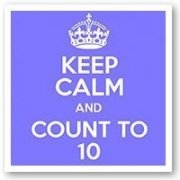Teenager boys – Anger, powerlessness and rage.
 Teenage boys face many challenges as they navigate adolescence and one of the biggest is how they navigate their emerging anger and aggressions.
Teenage boys face many challenges as they navigate adolescence and one of the biggest is how they navigate their emerging anger and aggressions.
Often, as a teenagers testosterone levels increase and biologically they are faced with an increase in their aggression and anger; how well they have been set up through their life to navigate these often primal and powerful feelings will determine whether they assimilate this energy as an adult ; either in a positive and assertive way, or whether they become stuck and powerless or rage-full and uncontrolled.
The Primal disconnection.
There are many ways in which a coming of age male learns to disconnect from their anger. Helping them to understand how this came about and facilitating a safe and constructive way of using it, allows new choices for them which ultimately has them once again accepting their anger and being able to assert themselves to get what they need in life.
So how is it that boys disconnect from their anger in the first place?
Some of the main ways this disconnect occurs comes from their own experiences of anger, how they experience anger from others and what beliefs come from this.
One belief I face often from teenage boys is that anger is wrong, or not allowed.
If a child has experienced their parents fight in destructive and even violent ways, or if the child has been victim of misplaced anger or rage from another, then the boy often creates a rule in himself that will ensure such situations do not occur again in their own life. This rule is generally “ anger is bad, if I become angry then I am bad”, or “ I must stay away from anger because it’s dangerous”. Such a belief underpins their anger and stops them from accessing it. Even when the anger is accessed they will typically move away from it quickly to avoid, in their estimation, “being bad”, or that they feel suddenly “too dangerous”. The result of such a block is that the boys lose something of their own personal power. So in the school yard, this boy will end up conceding in all manner of ways to the boys who are in full charge of asserting their will and their needs. Ultimately this results in a teenager who struggles to both ask for what he needs and to stand up for what he believes.
The flip side to this block can be like a rage filled pressure cooker where the boys anger, although not allowed, grows and grows until a single instance brings all the anger out at once. Typically this is experienced as uncontrollable rage and the boy, rather than feeling in control with his anger, feels powerless to his anger, which further confirms their belief that anger is bad. The more this cycle continues the worse the rage gets and the stronger their belief anger is bad.
In either case, the way forward is in helping the teenager experience their anger in new ways. In therapy, talking about the rules and beliefs of their anger is often a starting point but its typically not enough. What I’ve often found is that the teenager needs to have an actual experience of their anger that produces a different and positive result, so they can start to understand anger’s usefulness when used assertively.
This approach requires the therapist to be in a solid relationship with the young man while they access their anger, to be able to truly hear the needs under then anger, to demonstrate that their anger can be held and that they are still accepted once their anger arises. Being able to provide this setting allows quite a sudden and powerful reframing of anger and typically frees the teenager to be in control of his own anger.
Once it is achieved the teenager has some quite predictable changes in their life. They feel more comfortable with peers and less focused on pecking orders within social groups. They feel less anxious in themselves and become more expressive in social settings, and they are also free from recurring angry thoughts, which were previously caught up in their blocked anger.
What I find most interesting about this process is that once they have finally experienced their anger in more positive ways, within 1 or 2 sessions they share that they do not need to return and that life is now somehow back on track.







